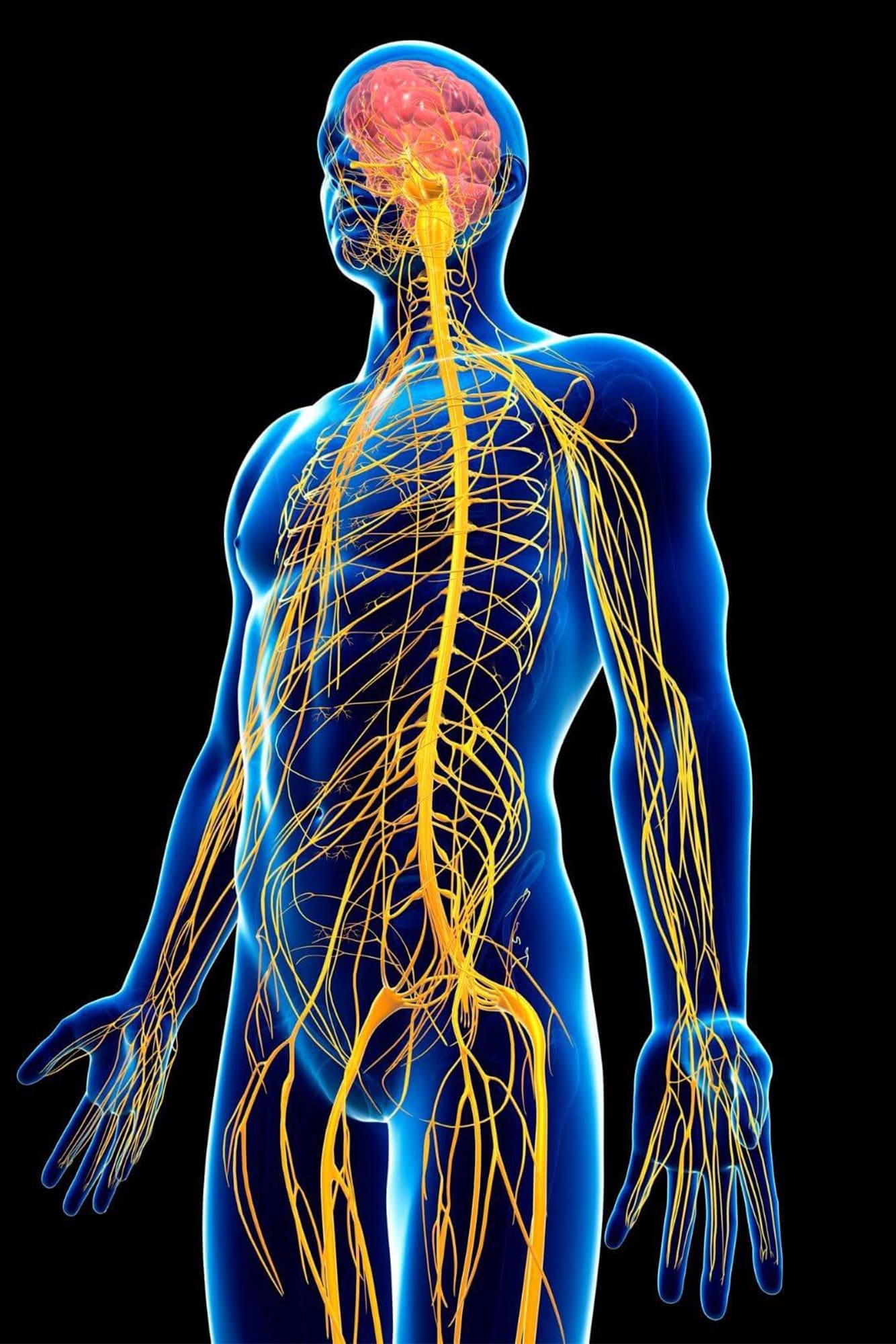Cannabigerol (CBG) is gaining attention in the medical community for its potential health benefits.
What is CBG?: Often hailed as the ‘mother’ of cannabinoids, CBG is the chemical precursor to well-known compounds like THC and CBD. This means CBG transforms into these other cannabinoids during the plant’s growth, making it a cornerstone of cannabis biochemistry.
CBG’s Rarity: Unlike THC and CBD, CBG is less common in cannabis plants. This rarity makes its extraction more challenging and often more expensive.
CBG and Your Body: A Unique Interaction
How CBG Works: CBG interacts uniquely with our body’s cannabinoid receptors, CB1 and CB2. Unlike THC, it doesn’t bind strongly to CB1 [1], meaning it won’t make you feel “high.” Its interaction with CB2 receptors [2], mainly found in the immune system, suggests potential benefits for pain and inflammation management.
Beyond Cannabinoid Receptors: CBG also affects non-cannabinoid receptors. For example, its influence on the 5-HT1A serotonin receptor points to potential mood and anxiety regulation benefits [3]. Another example is that CBG also shows affinity for α2-adrenoceptors, impacting cardiovascular health, pain modulation and ADHD [3].
The Therapeutic Canvas of CBG
Neuroprotection: Studies hint at CBG’s neuroprotective abilities, which could be game-changing for neurodegenerative conditions like Huntington’s and Parkinson’s [4].
Fighting Inflammation: In conditions like Inflammatory Bowel Disease, CBG shows promising signs of reducing inflammation [5].
Potential in Cancer Therapy: Early research indicates that CBG might slow down the growth of certain cancer cells [6].
Antibacterial Superhero: CBG has shown effectiveness against formidable bacteria like MRSA, marking it as a potential ally in the fight against antibiotic resistance [7].
Safety and Considerations
Possible Side Effects: While CBG is exciting, it’s important to consider potential side effects like lowered blood pressure or interactions with other medications, especially for heart health or mental well-being.
Consulting with Experts: At CannaPlus+, our team is here to guide you. Discussing your interest in CBG with our doctors ensures you receive safe advice that is personalised to you specifically.
Current Research and the Road Ahead
The Research Landscape: Despite its promise, comprehensive human studies on CBG are still in their infancy [8]. However, ongoing clinical trials and patient surveys are shedding light on its efficacy and safety [9].
Patient Experiences: Early feedback from users indicates high efficacy in managing conditions like anxiety and chronic pain, with minimal side effects [10].
Key Takeaways
- CBG is a unique and promising cannabinoid with diverse therapeutic potentials.
- Its interaction with the body’s cannabinoid and other receptors opens avenues for treating various medical conditions.
- Safety and drug interaction considerations are crucial for patients interested in CBG.
- Ongoing research and clinical trials will further illuminate CBG’s role in medical treatments.
Conclusion: CBG’s Emerging Role
CBG’s distinctive profile opens new avenues in medical cannabis treatment. While we eagerly await more comprehensive studies, the potential of CBG is undeniable. For our patients at CannaPlus+, exploring CBG’s possibilities starts with a conversation. Reach out to us to learn more about how this fascinating cannabinoid can be part of your wellness journey.
FAQ Section:
What is CBG?
- CBG, or Cannabigerol, is a non-psychoactive cannabinoid found in cannabis plants. It’s the chemical precursor to other cannabinoids, including THC and CBD.
How does CBG differ from CBD and THC?
- Unlike THC, CBG does not produce psychoactive effects. It differs from CBD in its chemical structure and the way it interacts with the body’s cannabinoid receptors.
What potential health benefits does CBG offer?
- CBG has been studied for its potential neuroprotective, anti-inflammatory, anti-cancer, and antibacterial properties.
Are there any side effects of using CBG?
- Possible side effects may include lowered blood pressure, a slower heart rate, and dry mouth, especially relevant for patients on certain cardiovascular or psychiatric medications.
Can CBG interact with other medications?
- Yes, CBG can interact with medications, particularly those that affect the cardiovascular system and mental health drugs. It’s important to consult with healthcare providers before using CBG.
Is CBG legal and safe to use?
- A prescription from a New Zealand registered doctor is a legal medication. As for safety, while preliminary studies are promising, more research is needed. Always consult with healthcare professionals before starting any new treatment.
How can I start using CBG?
- For personalised advice and to ensure safe usage, it’s best to consult with the doctors at CannaPlus+.
References
- Pertwee RG. Inverse agonism and neutral antagonism at cannabinoid CB1 receptors. Life Sci. 2005 Feb 4;76(12):1307-24. doi: 10.1016/j.lfs.2004.10.025.
- Navarro, G., Varani, K., Reyes-Resina, I., et al. Cannabigerol Action at Cannabinoid CB1 and CB2 Receptors and at CB1-CB2 Heteroreceptor Complexes. Frontiers in Pharmacology, 9, 632. 2018 https://doi.org/10.3389/fphar.2018.00632
- Cascio, M. G., Gauson, L. A., Stevenson, L. A., Ross, R. A., & Pertwee, R. G. (2010). Evidence that the plant cannabinoid cannabigerol is a highly potent alpha2-adrenoceptor agonist and moderately potent 5HT1A receptor antagonist. British Journal of Pharmacology, 159(1), 129–141. https://doi.org/10.1111/j.1476-5381.2009.00515.x
- Valdeolivas S, Satta V, Pertwee RG, Fernández-Ruiz J, Sagredo O. Sativex-like combination of phytocannabinoids is neuroprotective in malonate-lesioned rats, an inflammatory model of Huntington’s disease: role of CB1 and CB2 receptors. ACS Chem Neurosci. 2012 May 16;3(5):400-6. doi: 10.1021/cn200114w.
- Borrelli, F., Fasolino, I., Romano, B., et al. (2013). Beneficial effect of the non-psychotropic plant cannabinoid cannabigerol on experimental inflammatory bowel disease. Biochemical Pharmacology, 85(9), 1306–1316. https://doi.org/10.1016/j.bcp.2013.01.017
- Baek, SH., Du Han, S., Yook, C.N. et al. Synthesis and antitumor activity of cannabigerol. Arch. Pharm. Res. 19, 228–230 (1996). https://doi.org/10.1007/BF02976895
- Appendino, G., Gibbons, S., Giana, A., et al. (2008). Antibacterial cannabinoids from Cannabis sativa: A structure-activity study. Journal of Natural Products, 71(8), 1427–1430. https://doi.org/10.1021/np8002673
- Atakan Z. Cannabis, a complex plant: different compounds and different effects on individuals. Therapeutic Advances in Psychopharmacology. 2012;2(6):241-254. doi:10.1177/2045125312457586
- https://clinicaltrials.gov/search?intr=cannabigerol&aggFilters=status:not rec
- Russo EB, Cuttler C, Cooper ZD, Stueber A, Whiteley VL, Sexton M. Survey of Patients Employing Cannabigerol-Predominant Cannabis Preparations: Perceived Medical Effects, Adverse Events, and Withdrawal Symptoms. Cannabis Cannabinoid Res. 2022 Oct;7(5):706-716. doi: 10.1089/can.2021.0058.








